Healthy Gluten Free Oat Bread Recipe: Vegan Option
Oats are high in protein and fiber, making them one of the best flours to bake breads with. This gluten free oat bread is made with homemade oat flour. One bag of oats can quickly turn into a mountain of lovely oat flour and this amazing gluten free oat bread recipe.
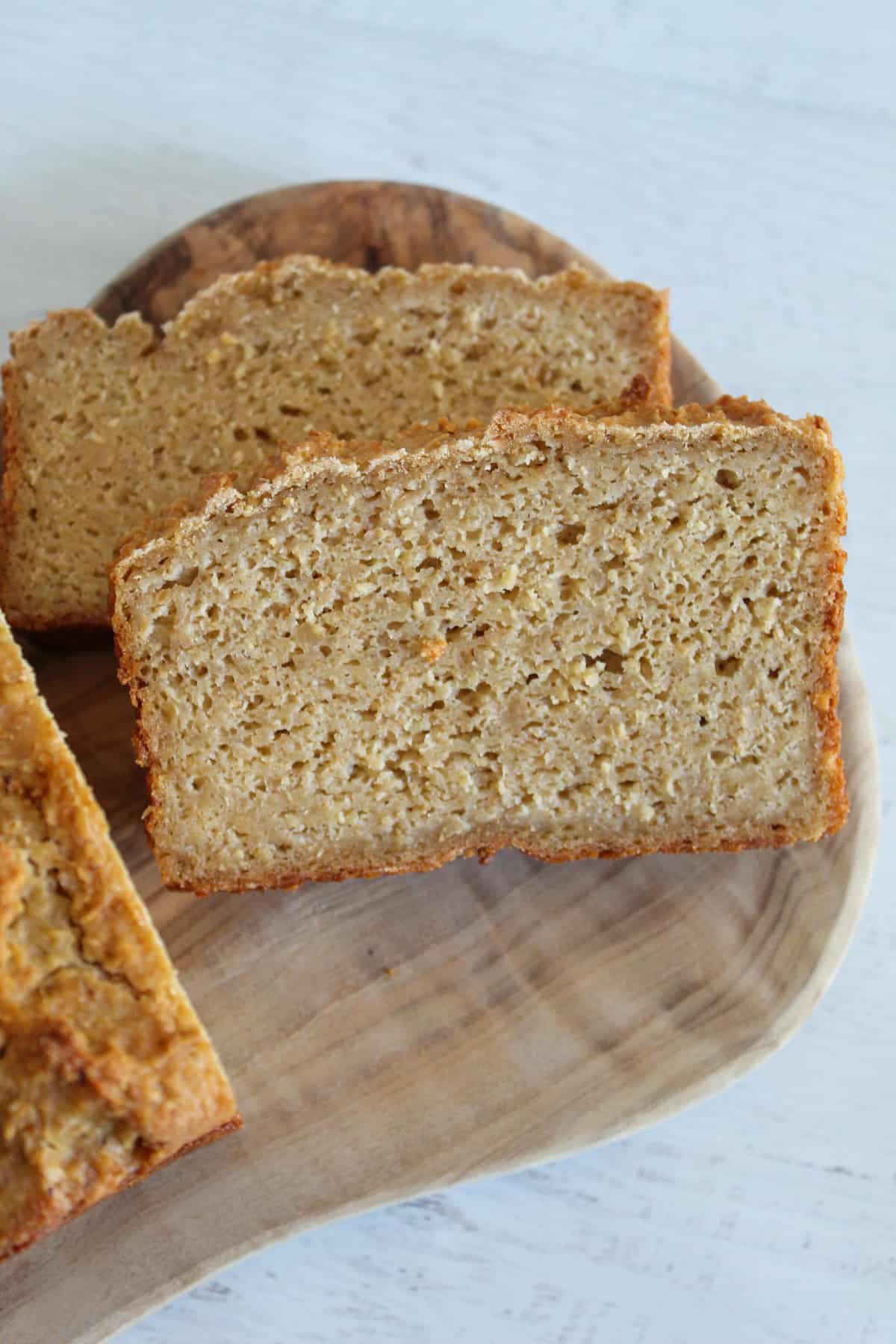
Looking for more recipes with oats and oat flour? Check out these oatmeal banana muffins, these oatmeal chocolate chip muffins and these gluten free oatmeal raisin cookies.
Jump to:
Oats & Oat Flour Recipes: Safe for Celiac and Gluten-Sensitivity?
Oats on their own are gluten free. But not all oats are certified gluten free because of cross contamination in production. Meaning those with celiac disease need to watch the labels to ensure the brand is certified gluten free.
As an affiliate partner of various brands and sponsored content, Zest for Baking may earn commission on qualifying purchases. Disclaimer
How to Make Oat Flour
Oats are easy to make into oat flour
All you need is a blender or food processor and viola, you have oat flour. Grind it longer for more fine flour and shorter for a coarser blend. I don’t normally grind my own flour, but oat flour, I do.
Toasted oats bring out the flavor
Toasting the oats beforehand is not necessary to make oat flour, but it sure does bring out the deep, robust flavor of the oats. It’s a lot like toasting nuts – if you’ve ever had a toasted walnut, they have that darker and more intense flavor than an untoasted walnut.
Oats produce a nicely balanced bread
Oats are high in protein and fiber, but just how high and what does that mean for bread baking? Well, according to our flour guide, oat flour contains about 17% protein and 10% fiber. Compare that to brown rice flour that has 7.5% protein and 5% fiber and almond flour with 21% protein and 10.7% fiber.
Both of these are key factors in how much water the flour will absorb during mixing. The oat flour with a higher protein and fiber count will absorb more water than the rice flour, but the almond flour will absorb more than the oat flour. Oat flour is an excellent choice for yeast breads as it it a nice balance.
Ingredients & Substitutions in this Oatmeal Bread Recipe
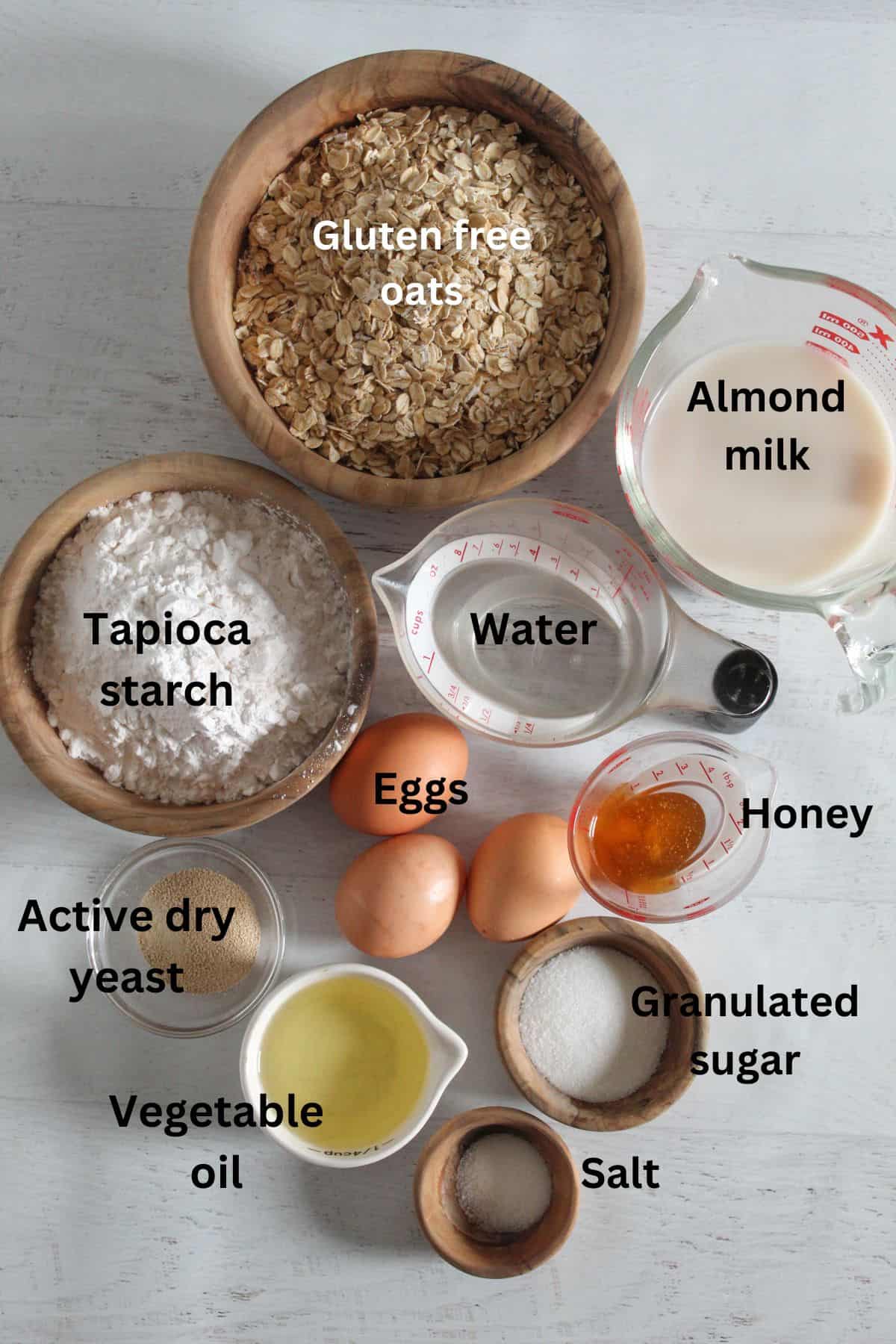
Fortunately, the simple ingredients list for this bread isn't too complicated. You'll want to make sure all ingredients are weighed and at room temperature. For where to purchase these ingredients - I recommend somewhere like Nuts.com where the oats are certified gluten free.
Below are the ingredient brands I use and recommend and the substitutions:
- Gluten free oats - These rolled oats by Bob's Red Mill work wonderfully. If you need to substitute the whole oats, I'd suggest going with a different bread recipe... this sorghum bread is delicious. Oats are a main ingredient in this bread so substituting them changes the whole recipe.
- Tapioca starch (also called tapioca flour) - Use the one from Nuts.com - they are not only budget friendly, but also really high quality. Instead of tapioca starch, you could use cornstarch, potato starch or arrowroot starch as well.
- Almond milk - Here's a great almond milk at a great price (make sure you pick unsweetened!). If you don't want to use almond milk, go for oat milk or coconut milk.
- Oil - I used vegetable oil, but peanut or canola or even melted coconut oil would work well too. I have not tested olive oil.
- Yeast - use the active dry yeast. The recipe has not been tested with instant or quick rise yeast.
- Sugar - regular white, granulated sugar was used in the recipe. A substitution for it would be Swerve sweetener. I use Swerve in this sandwich bread and in these lemon poppy muffins and it works the best of all the artificial sweeteners I've tried. Swerve isn't cheap but this oat flour bread is not a sweet bread, so you just use a small amount of sweetener.
- Honey - there's only a Tablespoon but honey adds such a wonderful flavor to this bread. I used this raw honey. Instead of honey, maple syrup would be an equally great substitute.
- Eggs - So there are 3 eggs in this recipe. I used organic eggs from my local grocery store. But if you need to substitute the eggs, go for chia eggs or flax eggs (my guide to substitutes covers this extensively).
How to Make Gluten-Free Oat Bread
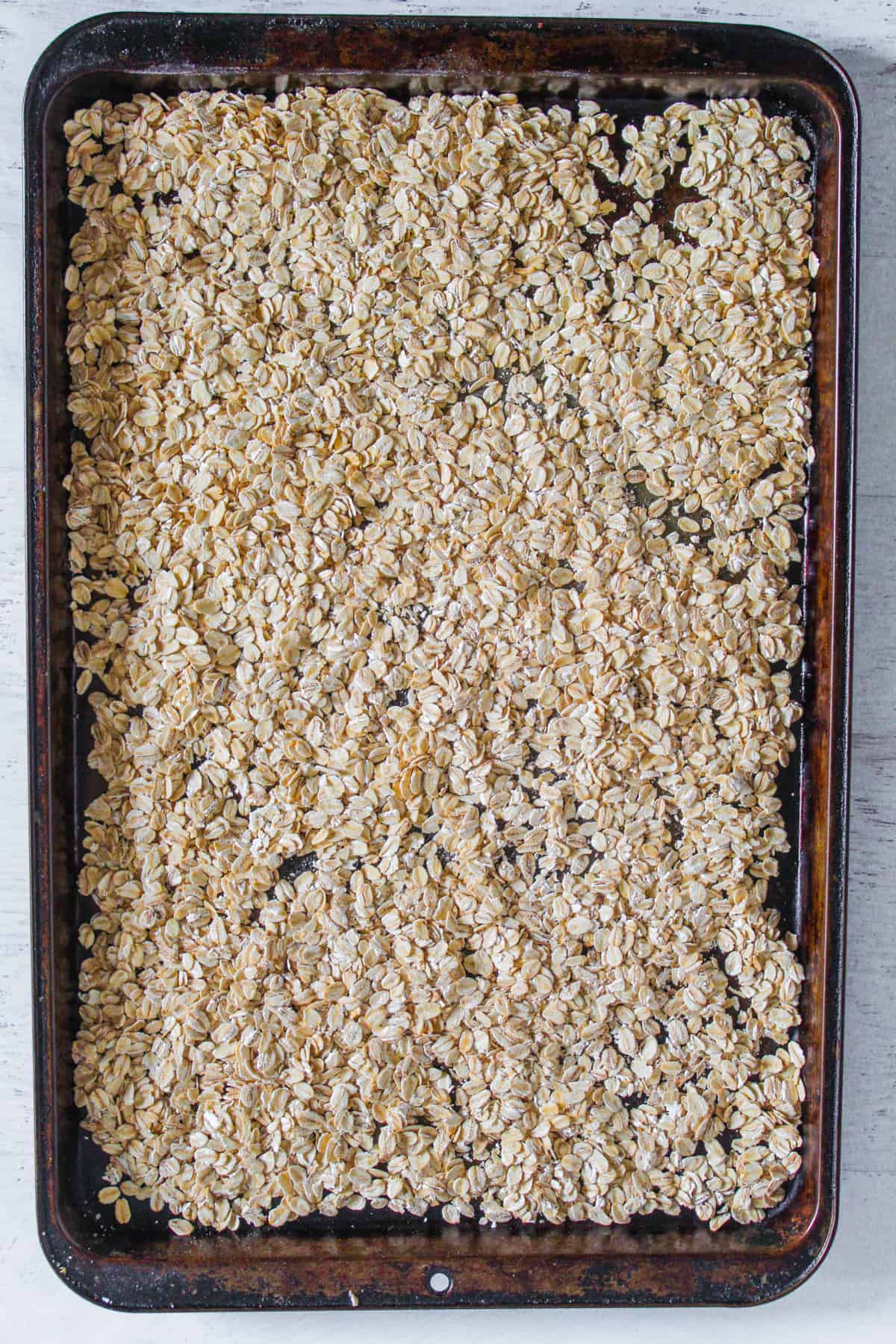
Step 1: Make the oat flour: After toasting the oats, add the oats, tapioca flour and salt to the food processor. Mix for about 4 minutes to make the finely ground flour.
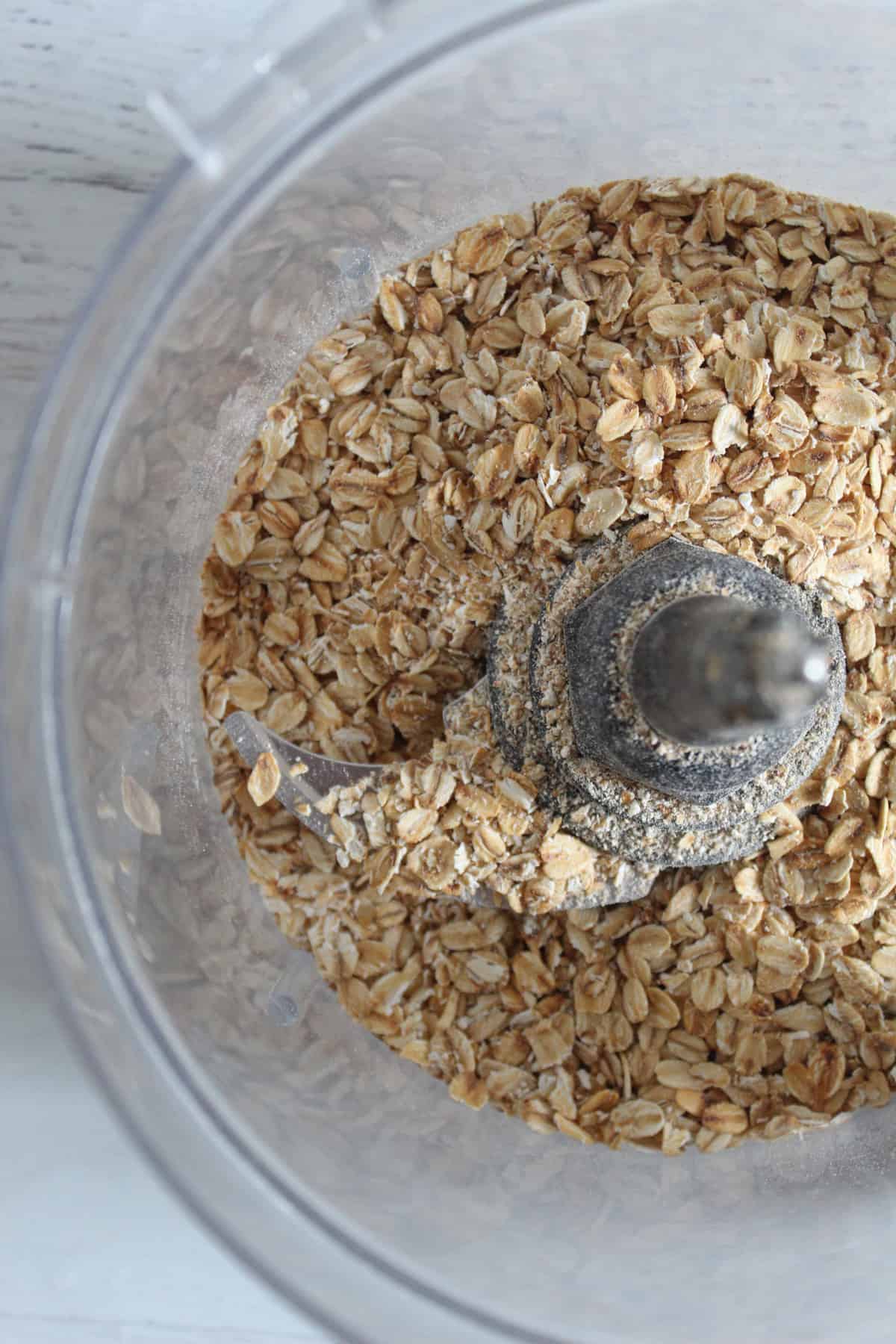
Step 2: After the oats are toasted, add to the bowl of a food processor.
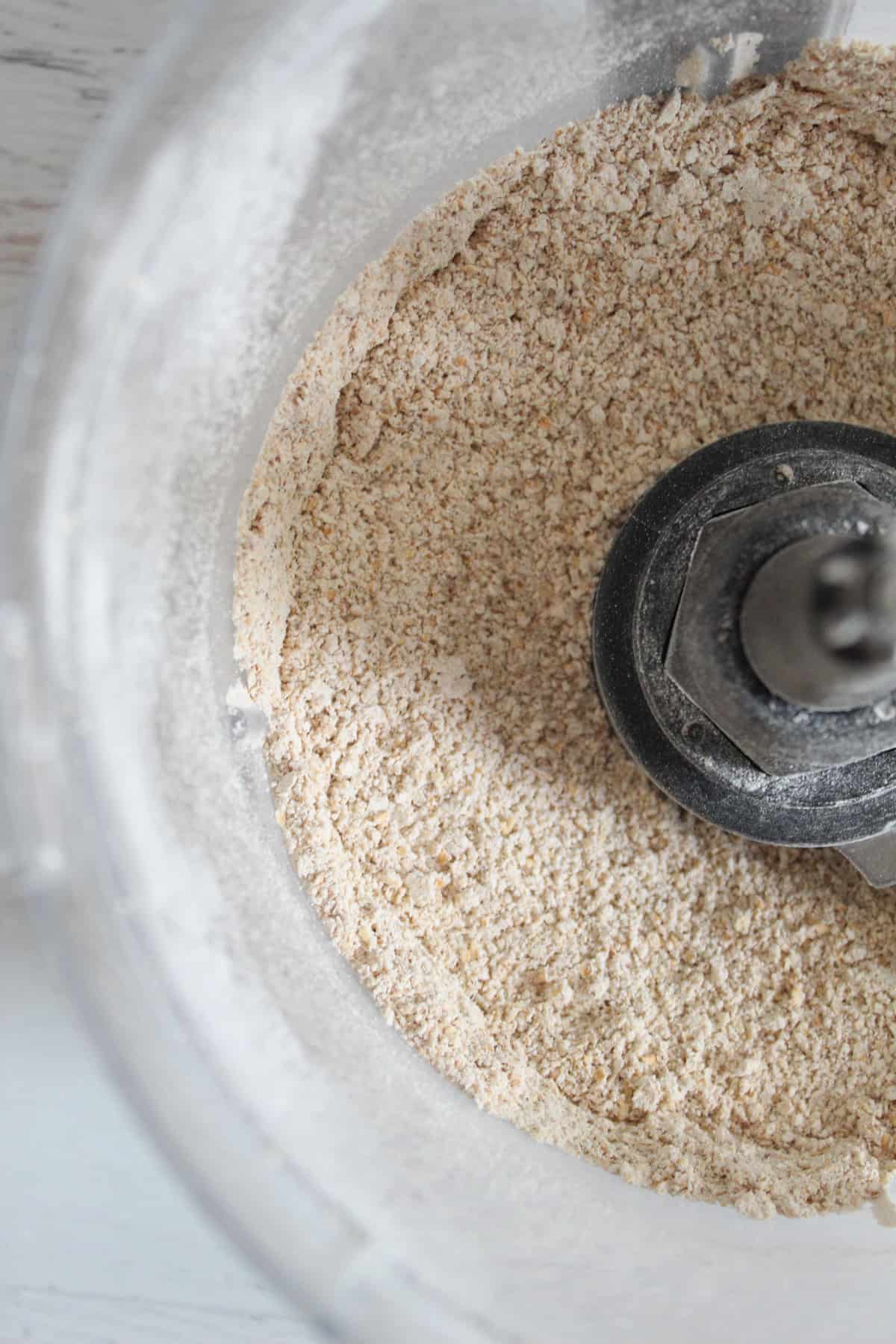
Step 3: Process until a flour forms - about 5 minutes.
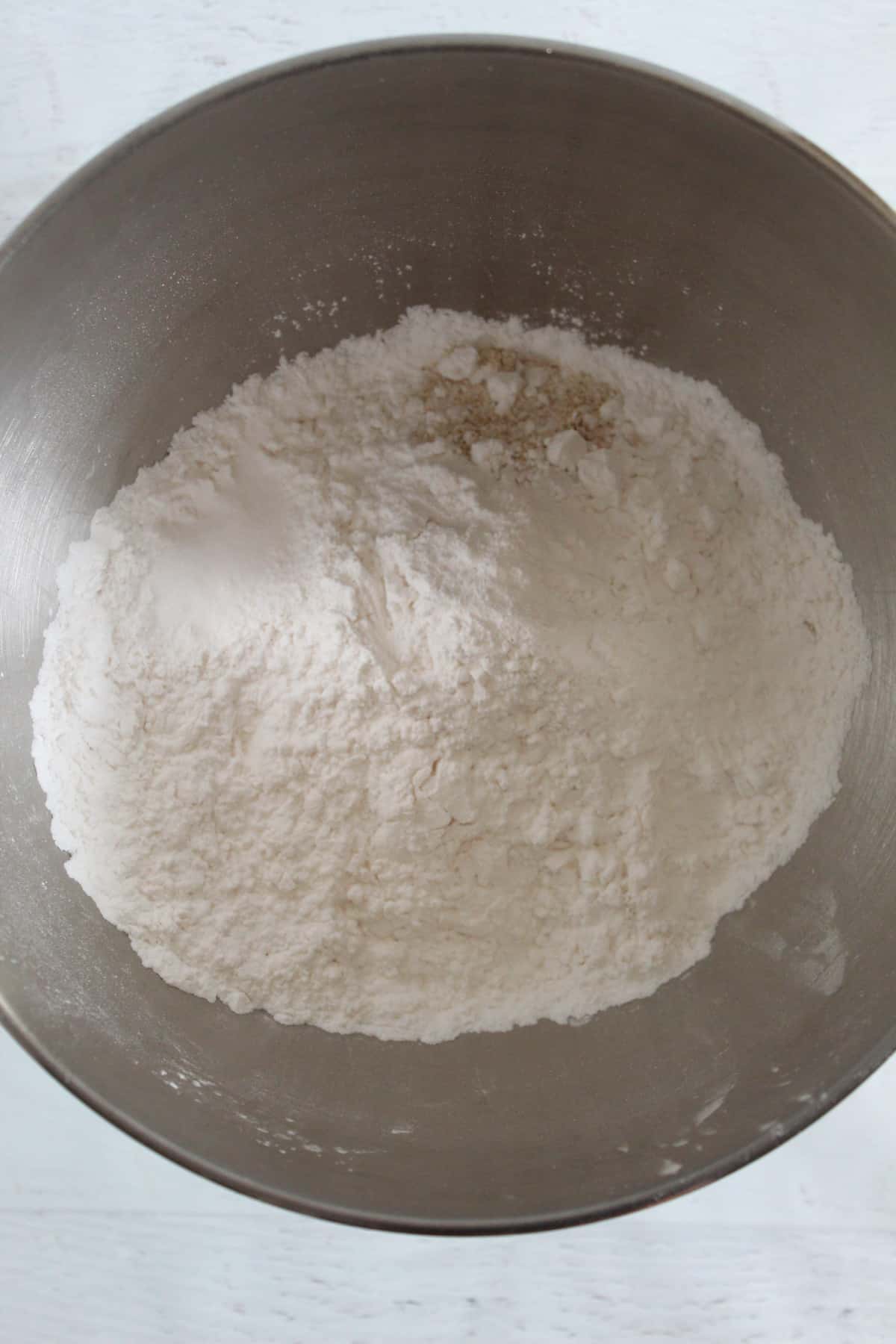
Step 4: Add oat flour, salt and tapioca starch to the bowl of a stand mixer.
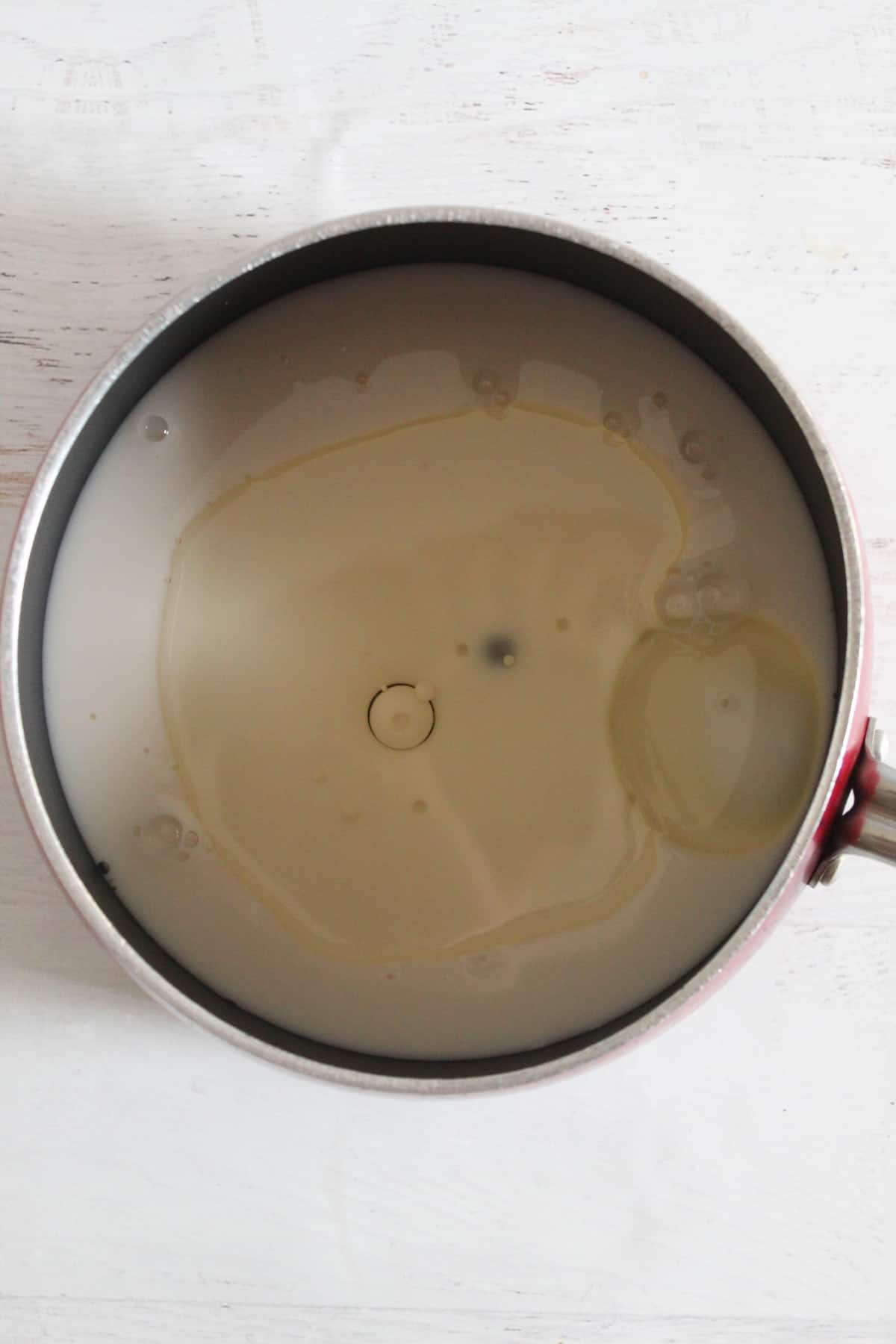
Step 5: Use a small pot and heat the milk and oil just to a rolling boil.
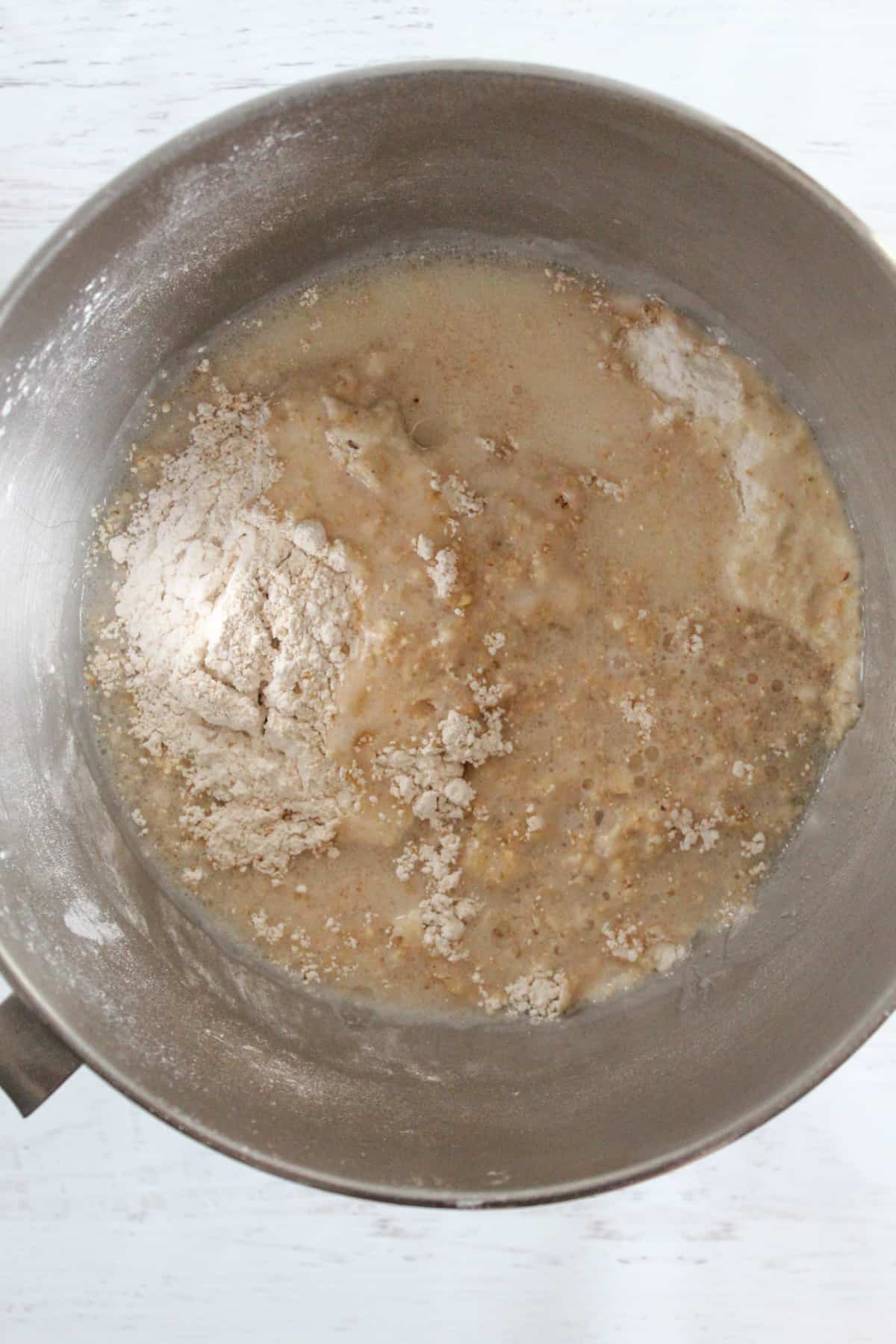
Step 6: Immediately remove from the heat and pour it into the bowl with the dry ingredients.
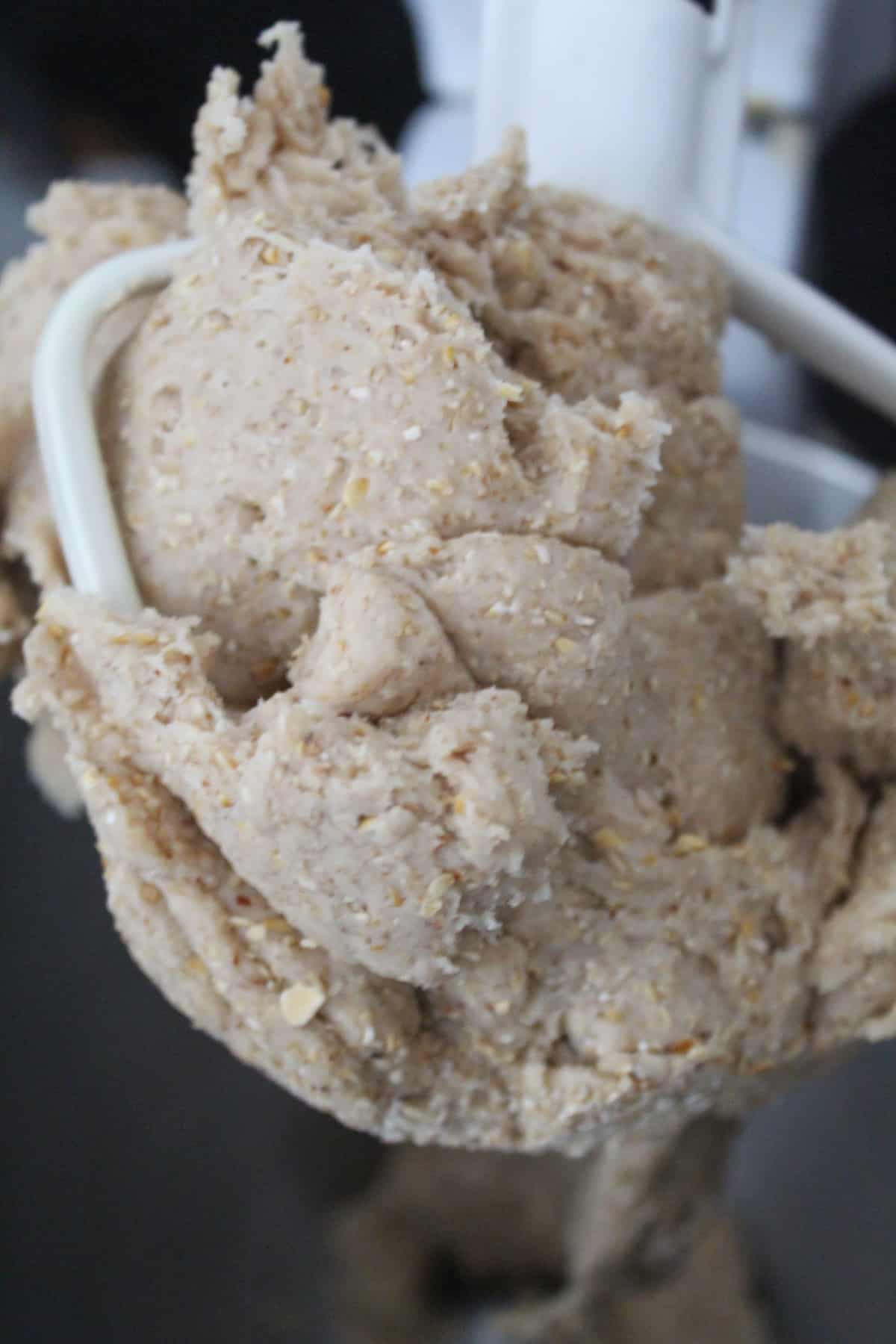
Step 7: Mix on medium speed until fully combined. The batter will be very firm and not soft. Let cool for 20 minutes.
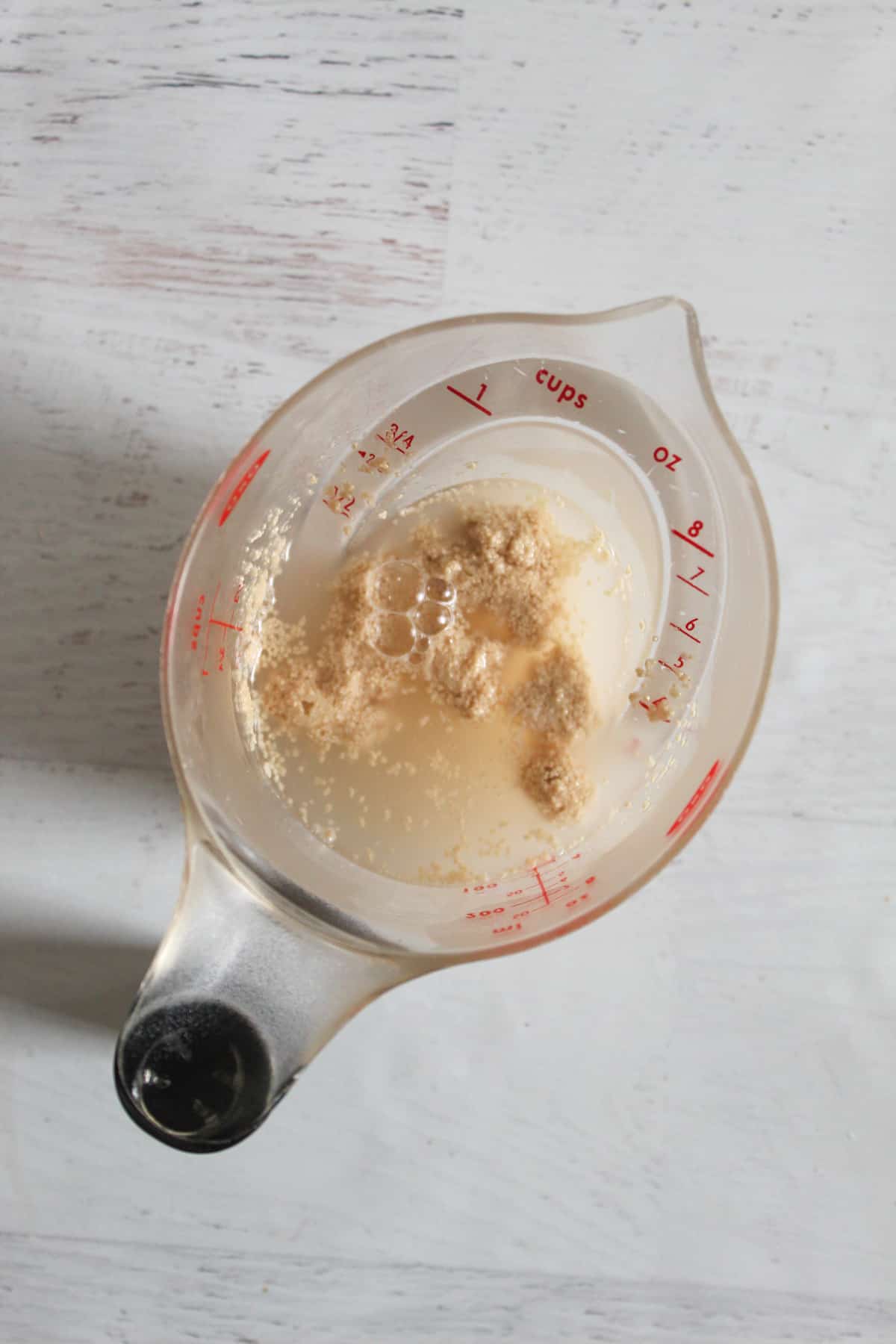
Step 8: Meanwhile, stir the yeast into the warm water and let proof for 5 minutes.
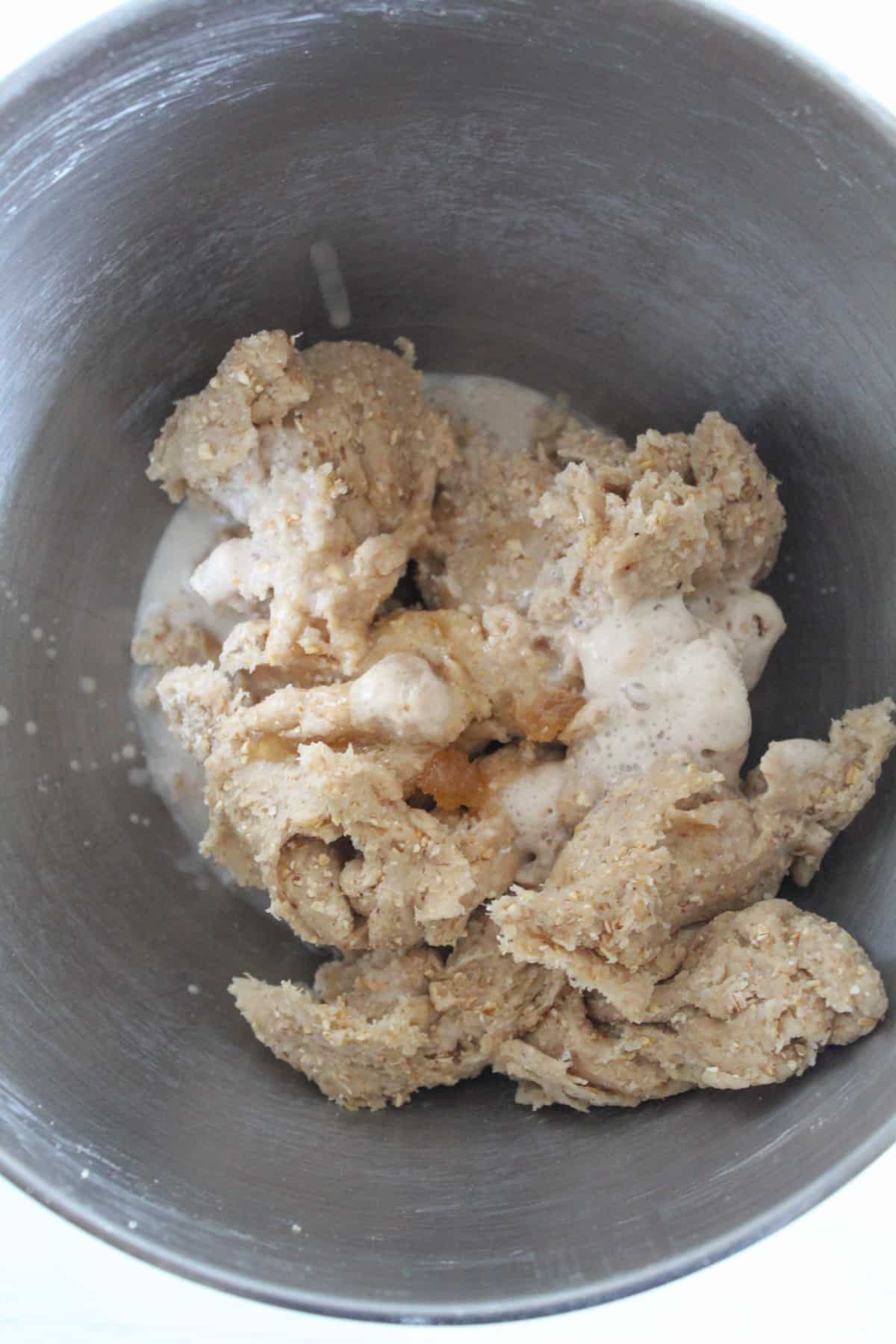
Step 9: Add the proofed yeast mixture and the honey to the stiff batter and mix for about 30 seconds on medium.
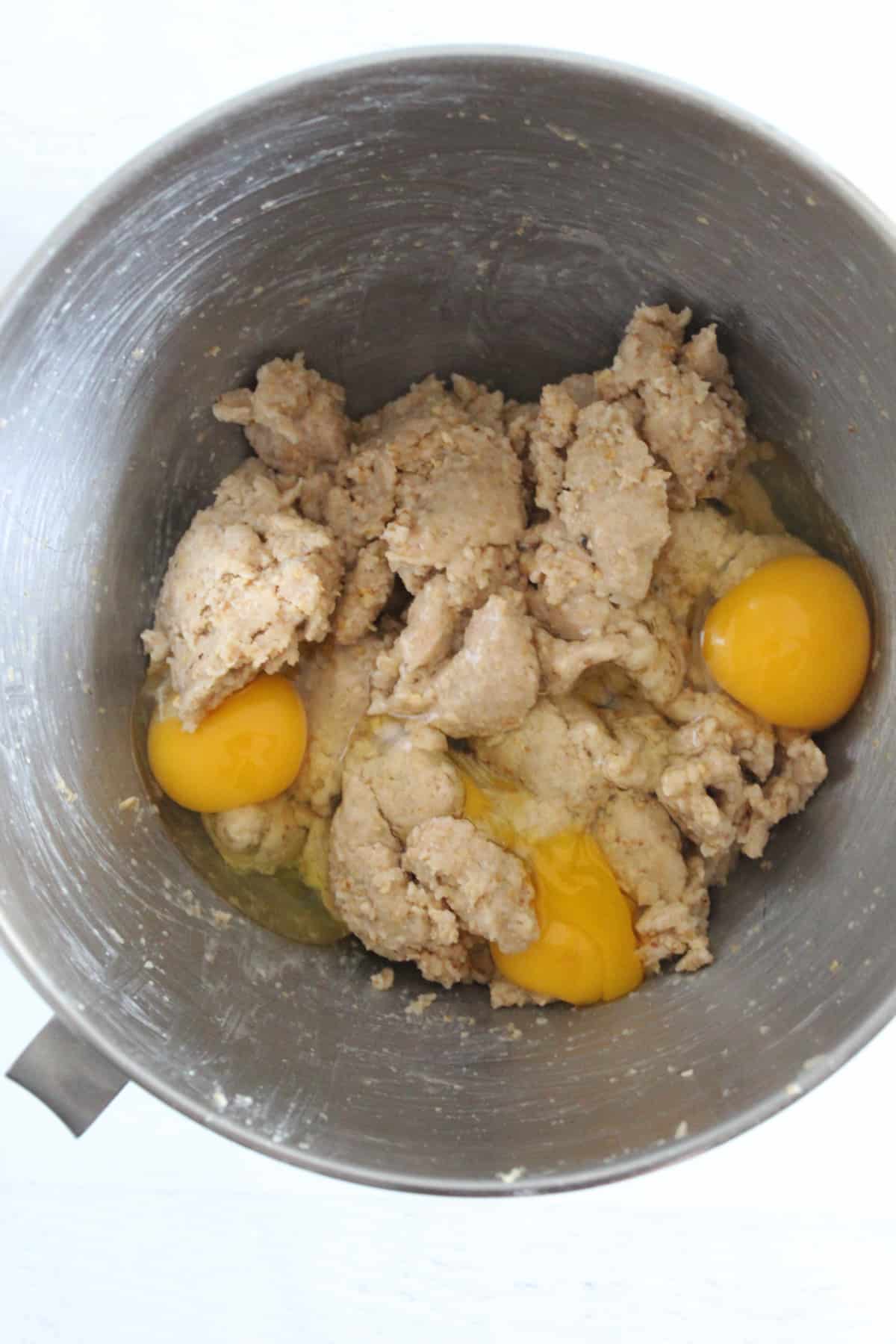
Step 10: Then add the eggs and mix again for 1 minute. The batter will not look like traditional bread dough. It will be stiff, but not able to be kneaded.
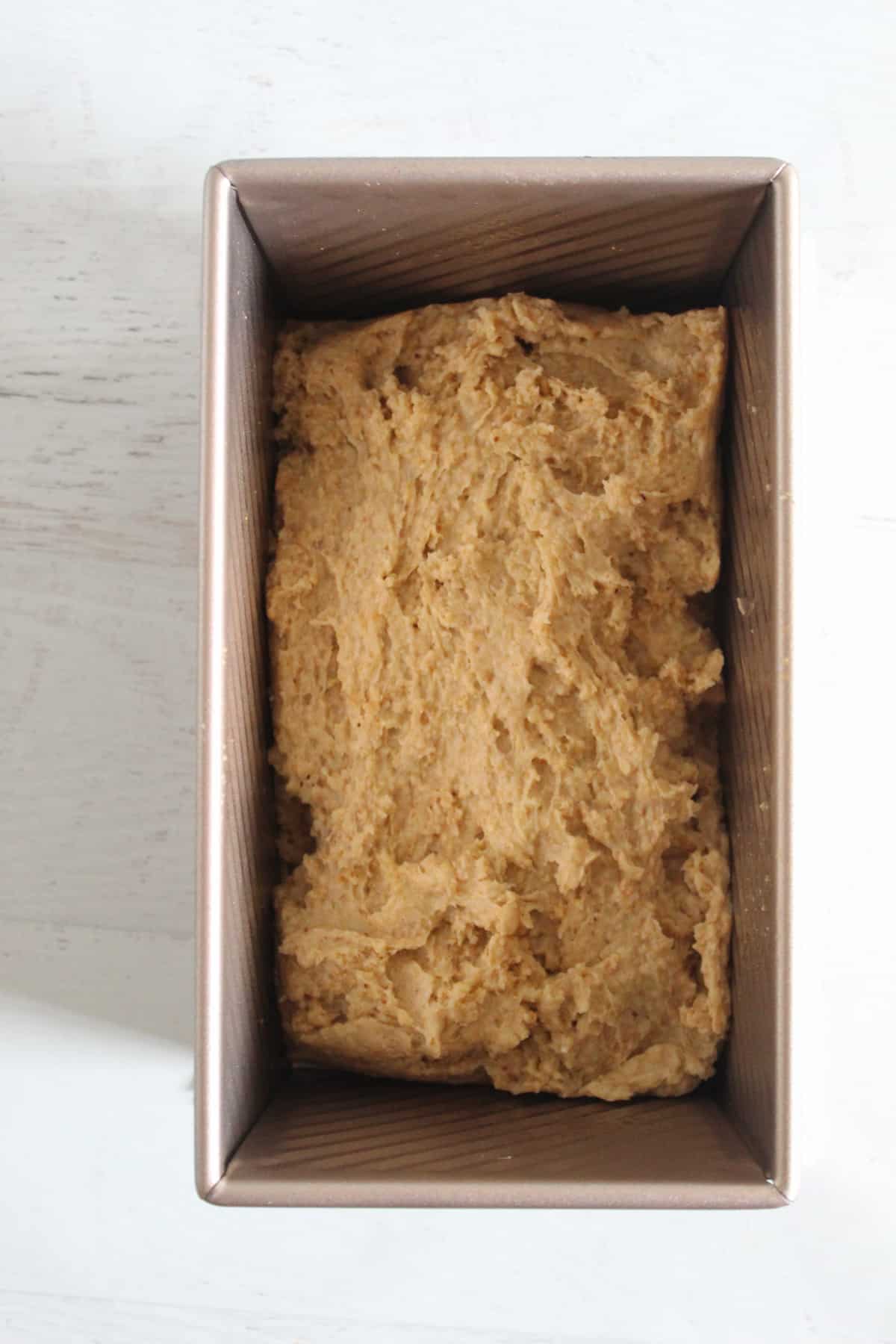
Step 11: Scrape the batter into the prepared baking pan. Use a 10 inch size bread pan or a 9"x5" loaf pan.
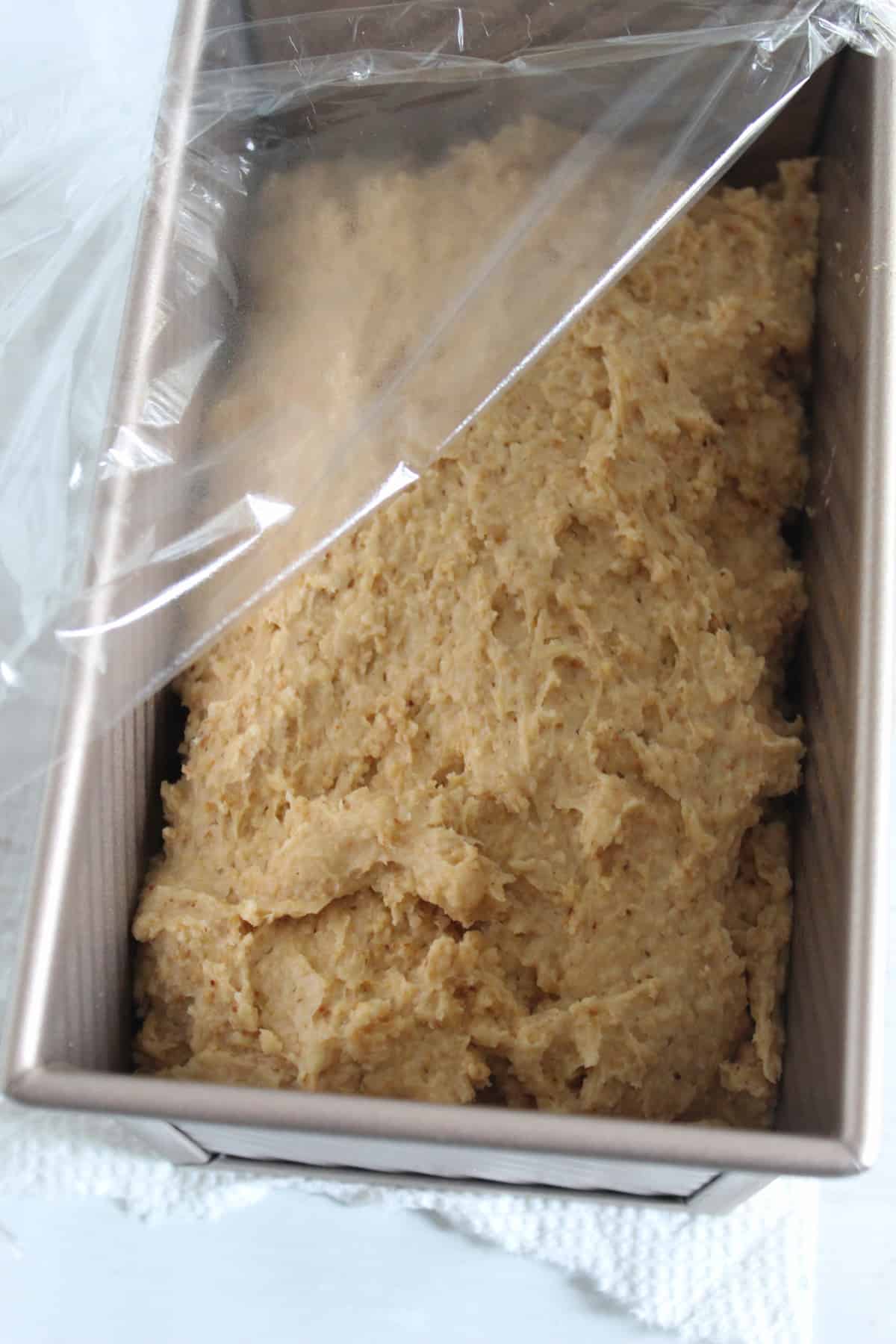
Step 12: Cover with a piece of plastic wrap and let it rise just until the top of the batter touches the rim of the pan. This may take anywhere from 15 to 30 minutes.
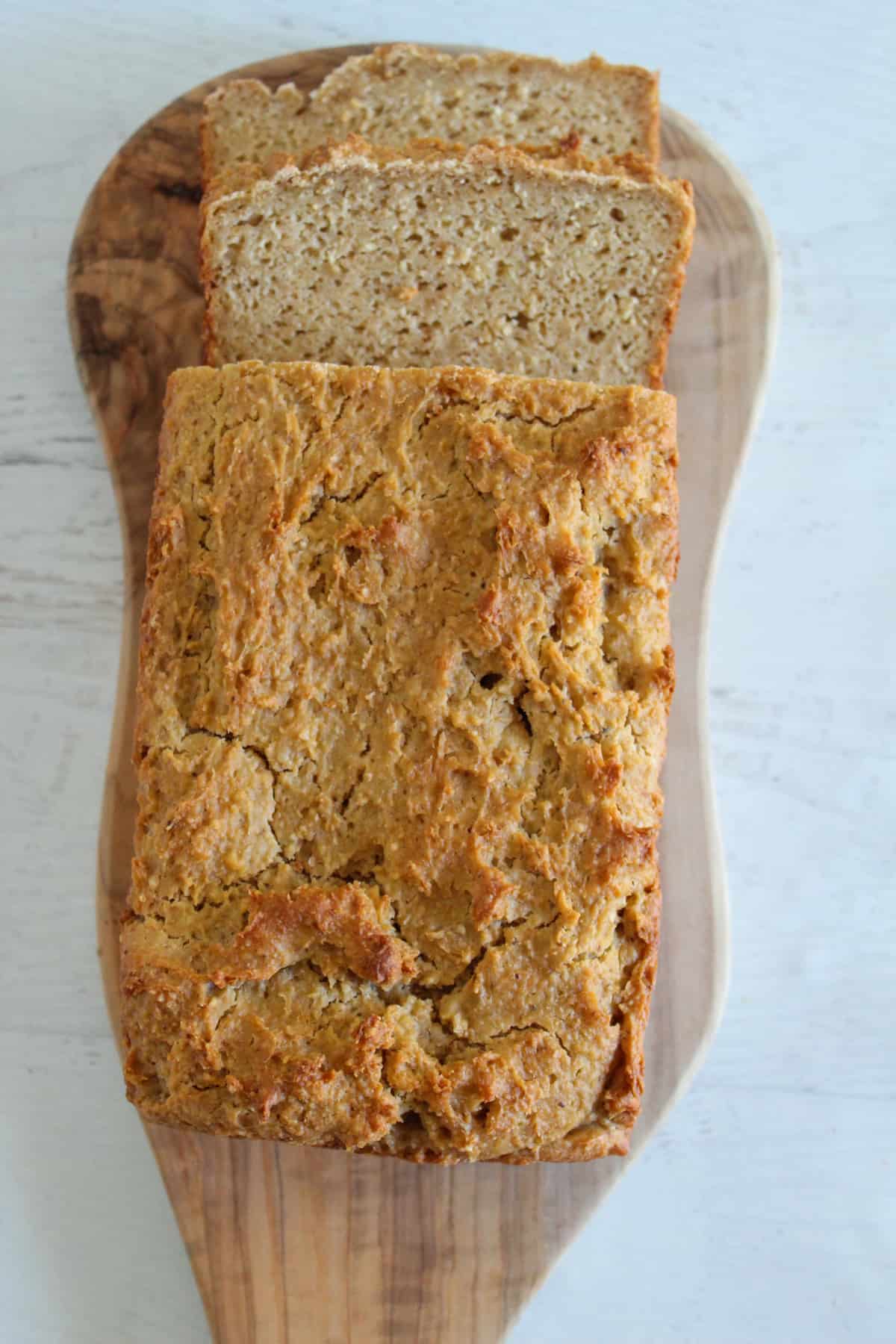
Step 13: Bake the loaf for about 50 minutes or until an instant read thermometer reads between 205 - 210 F. Start checking it at 45 minutes.
Storing this Healthy Oat Flour Bread
Store this bread in an air tight plastic bag or airtight container for up to 2 days at room temperature. Any longer than that and you'll need to slice it and freeze it. Individual slices may be toasted directly from frozen.
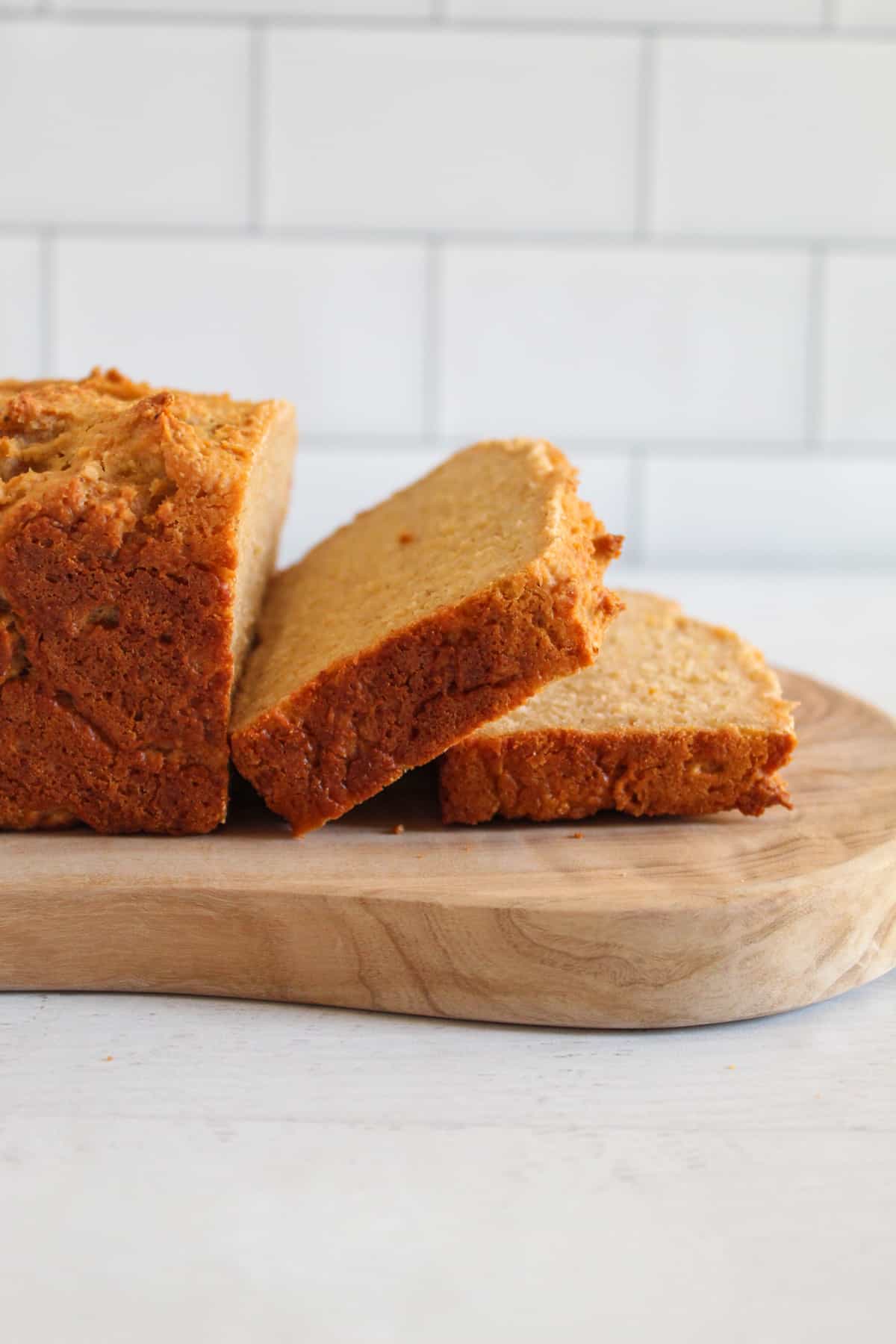
Pro Tips for this Gluten Free Oat Bread Recipe
This loaf has been tested and retested and retested again - it's an absolutely delicious bread with a slightly nutty flavor, but for the best results, it's important to follow these pro baking tips:
1. Use room temperature ingredients
Room temperature ingredients, as opposed to straight from the refrigerator, are a crucial factor in the success of this oat flour bread. It's tempting to just pull that milk straight from the refrigerator and add it to the recipe, but cold ingredients do not mix well and do not make for a nicely risen bread. The same goes for the flours and starches.
Tips for quickly warming eggs: Take a glass measuring cup like this one and fill it ⅔ full of water. Heat the water in the microwave for about 45 seconds. Remove the cup and float the eggs in the warm water for 2-3 minutes. (Watch your water temperature as hotter water will mean the eggs warm faster, less warm water may take a little longer).
2. Measure the flours and starches by weight
As you probably know, gluten free baking is so much different than baking with regular flours. From the use of starches in baking to the multiple flours, everything is different. And so is the way we measure ingredients. Now more than ever, a digital kitchen scale, like this one, is more important in your baking than ever before. You'll want to weigh everything in grams and then keep it exact. I talk about this more in my baking masterclass, but these measurements need to be exact. And cups may be vastly different from cup measure to cup measure.
3. Tools for successful bread
Some of these you may have on hand, but these are the tools you'll need to make this recipe:
- Stand mixer - when I say this is a tool you need, it really is one you need! It's a big purchase for sure, but one that will serve you well for years (and I mean years!) to come. For reference, my Kitchen Aid is 22 years old and works like new.
- Digital scale - there are some pricier scales out there, but this model is the one I have and works just as well as those. You basically want to it to be able to show grams and switch back and forth from ounces, grams, even ml is nice.
- Food processor - I never thought I used this as much as I do, but I realized this handy appliance's importance when my old one when out! I like this one because it's reliable and doesn't break the bank.
- Cookie sheet - something with a non stick coating is as versatile for cookies as it is for toasting these oats.
- Instant read thermometer - how any times has it looked like a loaf of bread is done, only to cut into it and see these gummy slices. Now it's not always a baking issue, but many times, that gumminess is just because the bread isn't fully baked. An instant read thermometer will help remedy that problem. I would recommend something like this one. There are always more expensive ones out there, but this one works great.
- Baking pan - the baking pan you want to use for this bread is one that has dimpled edges so the batter can 'climb' up the walls. These pans are excellent for that reason.
- Rubber spatula - This batter is quite stiff for the first few steps, that's why you'll need a good quality rubber spatula for working with it. These are excellent and seem to last forever!
Gluten Free Oatmeal Bread FAQs
The bread is excellent with just about anything from breakfast with some honey and butter to lunch sandwiches. My personal favorite is a mid afternoon snack with a dab of honey!
The oats are an essential ingredient in this oat bread. If you don't want to use oats, have a look at this buckwheat bread or this gluten free white bread. Both equally delicious loaves of bread.
The best way to store this bread is to wrap it well or place it into a plastic bag and either freeze it or keep it at room temperature for up to 2 days.
An alternative would be to use a hand mixer like this one.
After mixing together the milk mixture and oat flour mixture, the batter will not be like batter, it will be very stiff. Not until after you mix in the eggs will it look like softer batter.
Did you make and love this recipe? Give it your review and ![]() rating below! And make sure to follow me on Instagram, Pinterest and Facebook too!
rating below! And make sure to follow me on Instagram, Pinterest and Facebook too!
Recipe

Hearty Gluten Free Oat Bread
Ingredients
Method
- Preheat oven to 350 F. Spread oats on an ungreased cookie sheet.
- Bake for 12 minutes or until light golden brown. Set aside to cool.
- In a food processor, combine the toasted oats, tapioca starch and salt. Pulse for about 4 minutes until mixture results in flour.
- Transfer flour mixture into the bowl of a stand mixer.
- In a small saucepan, add the milk and vegetable oil. While stirring constantly, heat to a rolling boil.
- Immediately pour mixture into the bowl with the flour and mix on medium speed until fully combined, about 30 seconds - 1 minute.
- Let mixture sit for 20 minutes to cool.
- Meanwhile, in a small bowl or measuring cup, combine the yeast, sugar and water. Stir to combine and let sit for 5 minutes to proof.
- Into the cooled batter in the stand mixer bowl, add the honey and yeast mixture and mix just until combined, about 30 seconds. Scrape the bowl down.
- Add the eggs and mix on low-medium speed for 1 minute.
- Prepare a 10 x 4 inch or 9 x 5 inch baking pan by spraying with cooking spray and dusting with gluten free flour.
- Using a rubber spatula, scrape batter down and scoop into prepared pan.
- Let rise for 15-30 minutes, until batter hits the top of the rim.
- Preheat oven to 350 F and bake for 50 - 55 minutes.
- Remove from the oven and let the bread cool in the pan on a wire rack for 15 minutes.
- Remove the bread from the pan and lay it on its side on the wire rack for 15 minutes to finish cooling. Flip to the other side to cool for another 15 minutes. Turn the bread upright for another 30 minutes of cooling time.
- Slice and enjoy!
Video
Notes
- Make sure ingredients are room temperature.
- Note: tapioca starch is also called tapioca flour - they are the same thing.
- Use a food processor to grind oats into a flour - it will take about 4 minutes to completely grind.
- After adding the boiling milk and oil to the flour and mixing, the batter will be very stiff.
- Let the batter rise just to the top of the pan.
- Cool the bread as instructed.
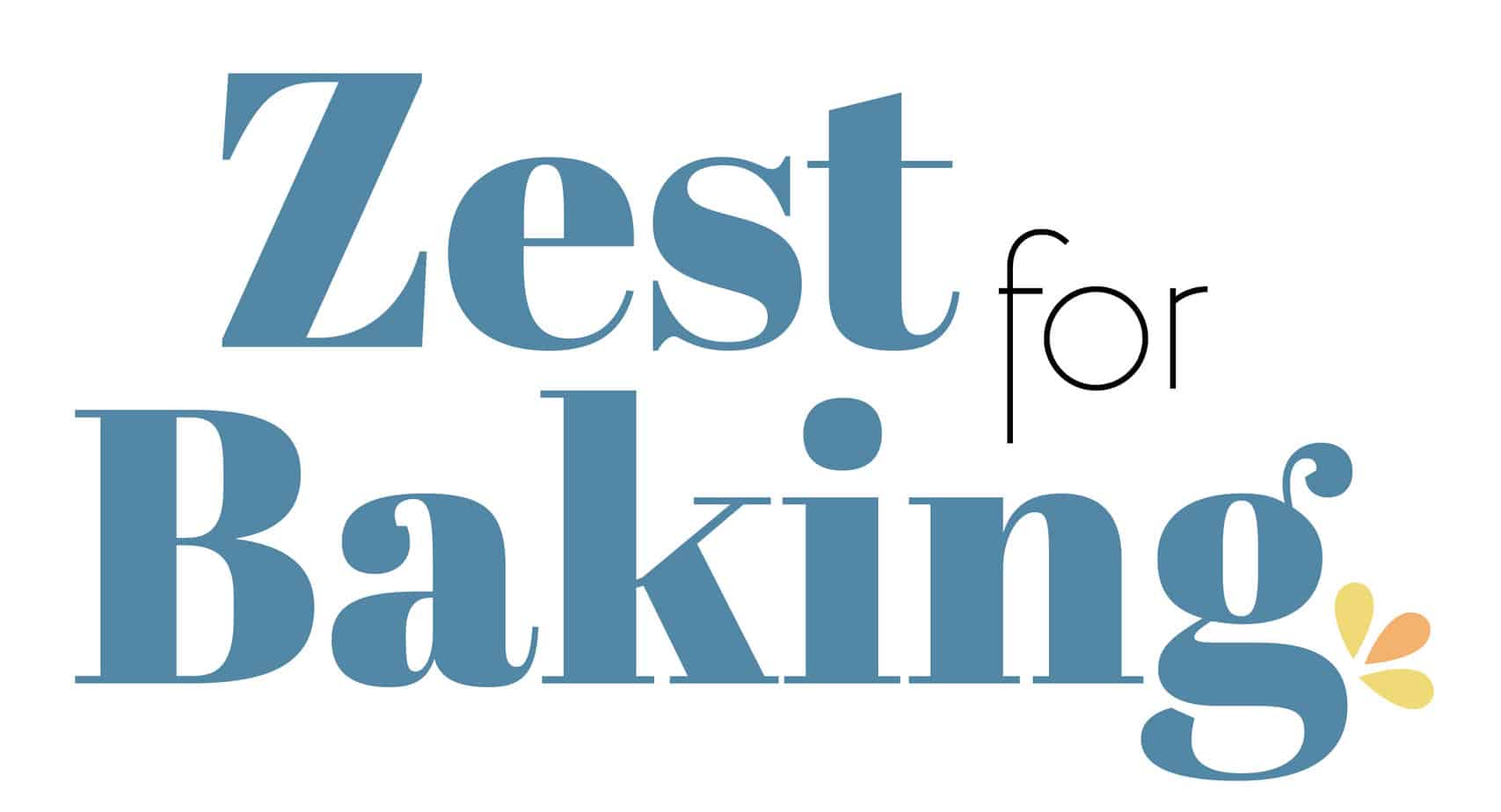
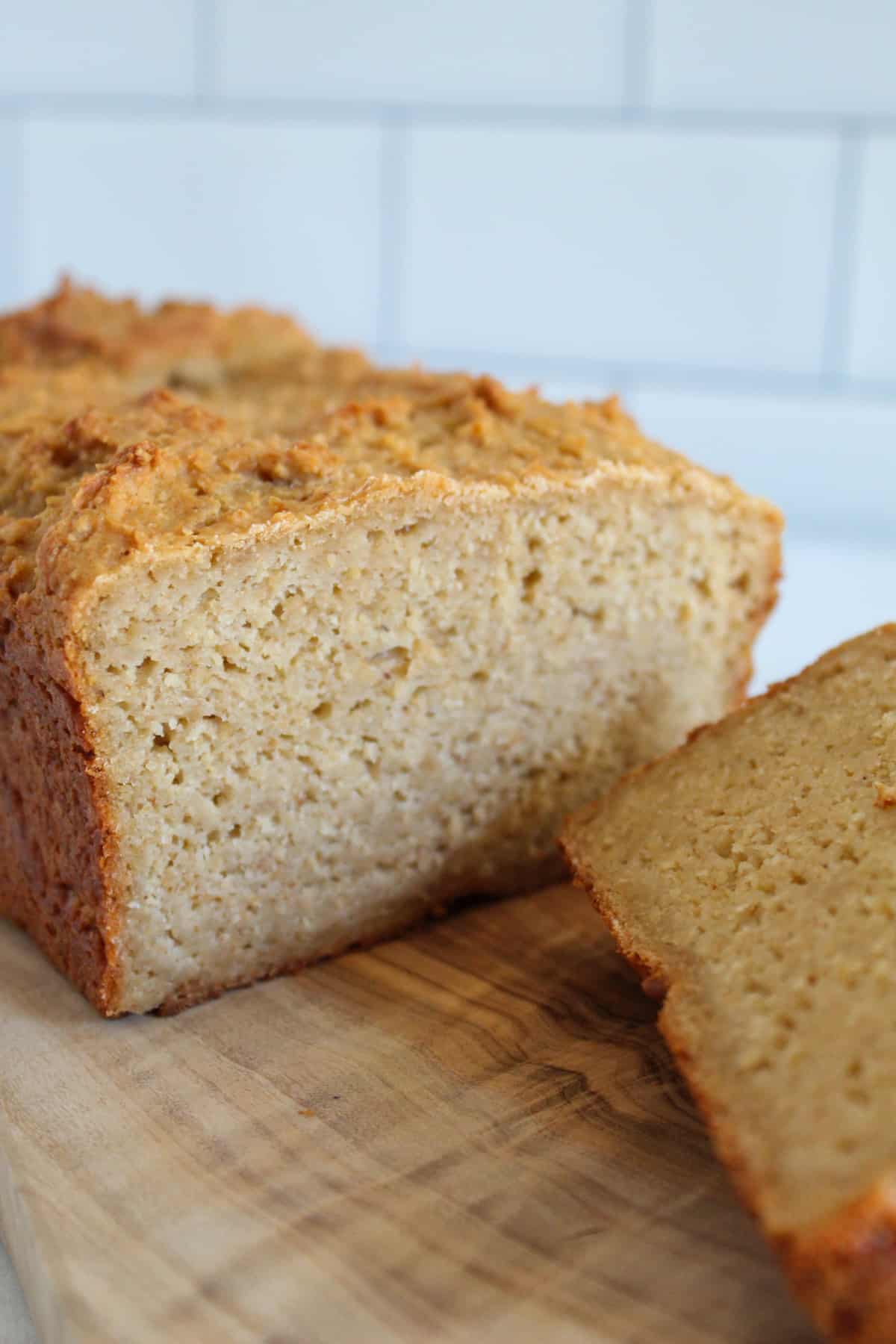
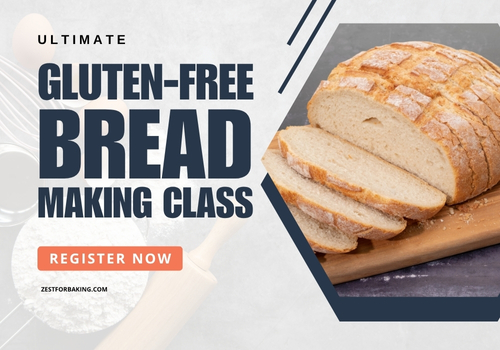
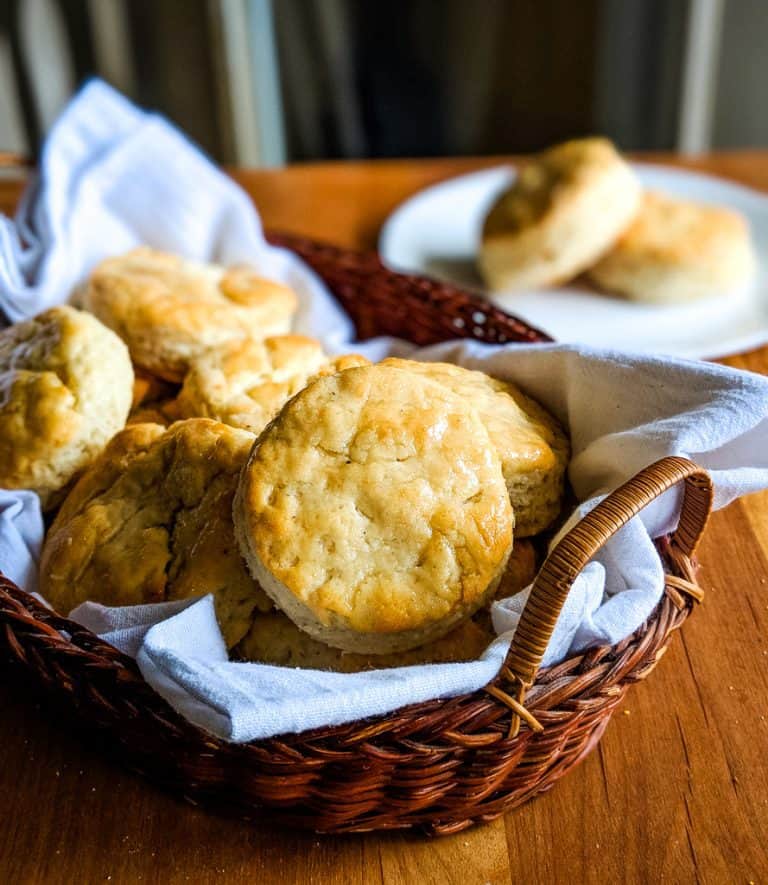
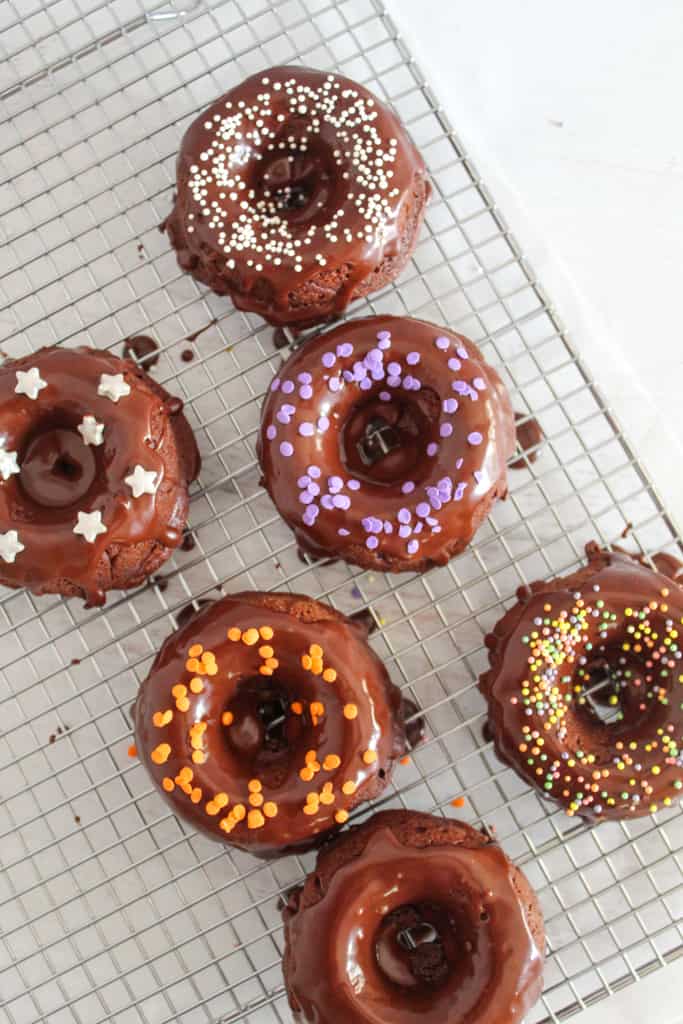
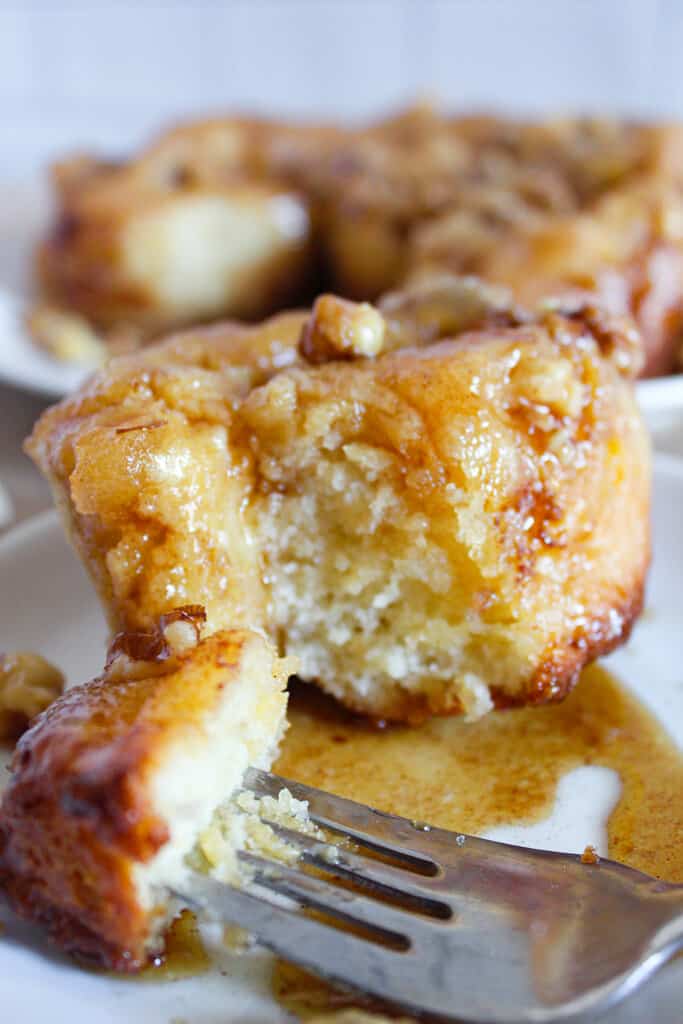
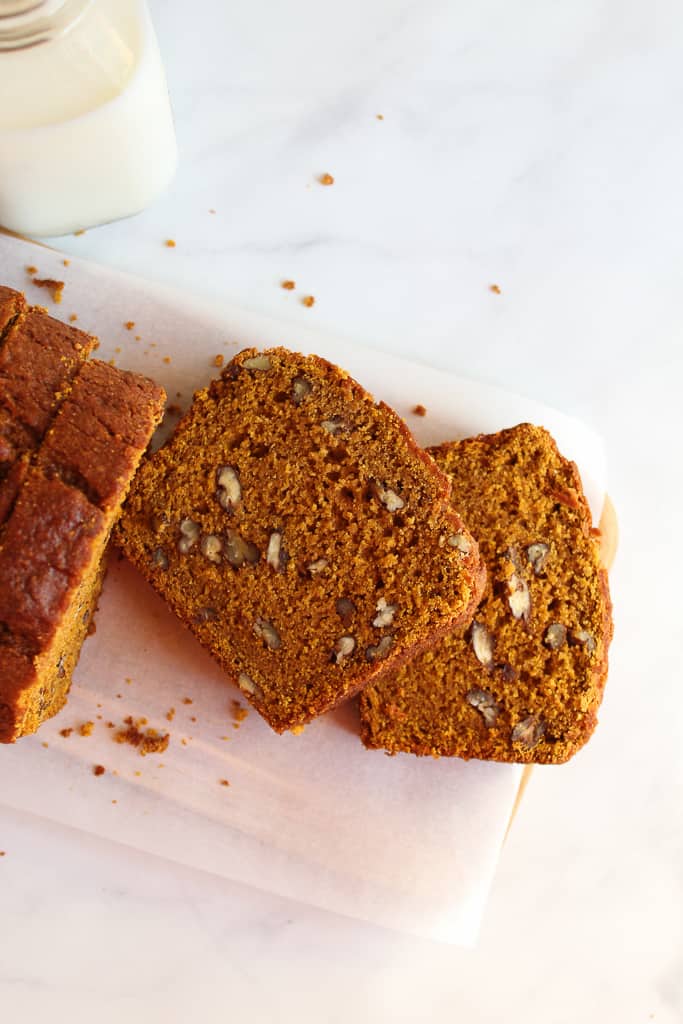
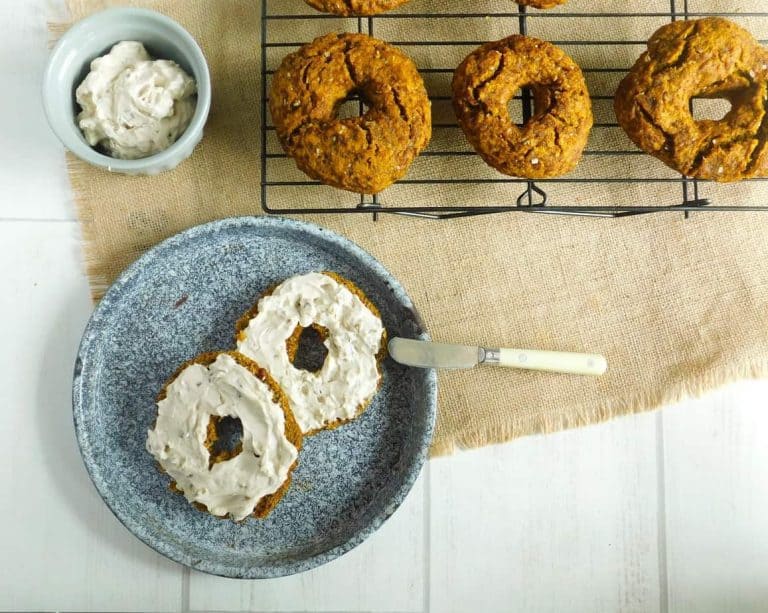
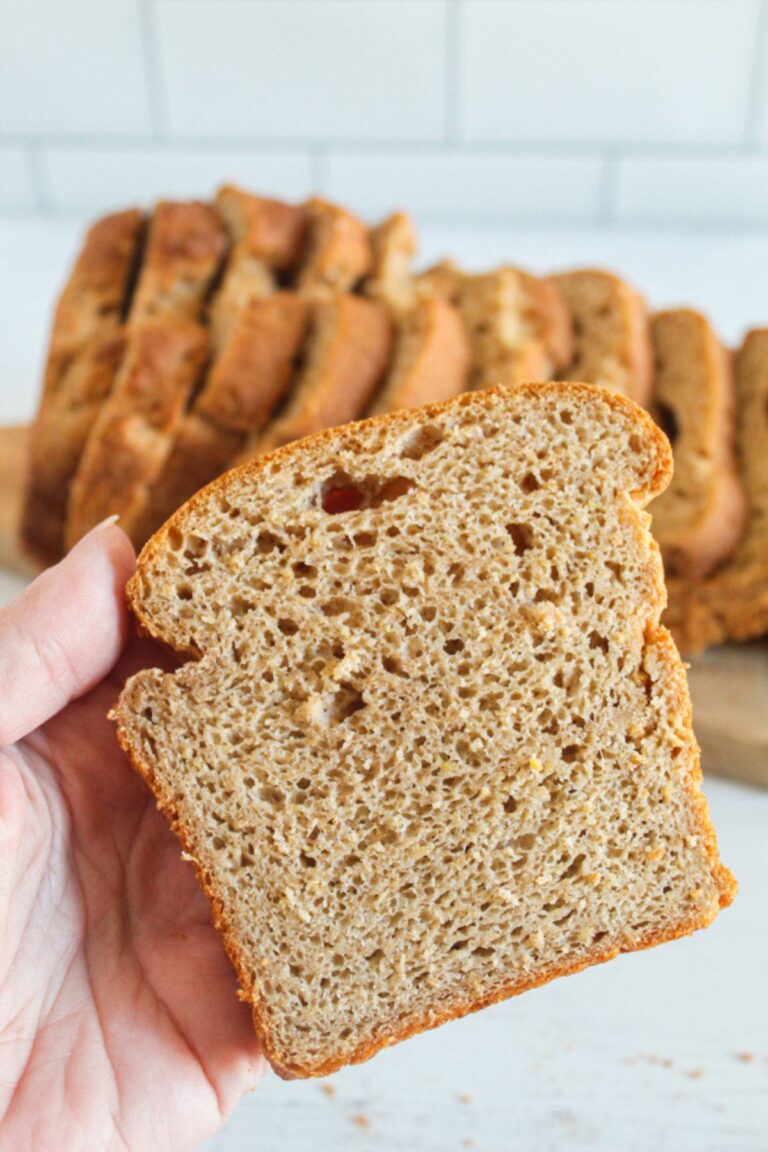
I have developed intolerance to yeast. Is there a substitute to yeast in this recipe?
Hi Sevgi,
Not in this recipe but I have a yeast free bread here: https://zestforbaking.com/ultimate-gluten-dairy-yeast-free-white-bread
Christine
Buckwheat honey is great in all whole grain baking. Not sure how the flavour comes through but it does
Oh that sounds delicious - great suggestion!
~Christine
HI! I made this bread and LOVED it. However, I since developed an allergy to eggs. I substituted flax seed egg and twice now the bread has come out super gummy, even when baked longer than the recipe says. The only difference is the egg sub. Any thoughts? This is the only recipe I've found with flours in it that I can eat so I really want to figure out what is going on.
Hi Amanda,
I know someone else commented about using flax seed eggs but I don't think I heard what the final result was... but it sounds like 3 flax seed eggs is not going to work here. Aquafaba is likely going to be the best bet then.
Aquafaba is the liquid in a can of chickpeas. What you'll do is shake the can well, then open and drain the liquid out. You'll need 2.5 Tablespoons of liquid for one egg.
Whisk the aquafaba a bit to get to that foamy consistency. Then use as the eggs.
From experience, this will be a close substitute to the eggs here.
Let me know how it goes.
Christine
Made the bread with one change, I used Amul Lactose free milk(I live in India) instead of almond milk but the bread turned out awesome!!
I also added a little cinnamon powder and the smell of the bread with cinnamon when it was baking was lovely
Thanks for the recipe
Will be making it again
Hi Rachel,
Oh the cinnamon sounds delightful!
So glad you made it!
Christine
Would a 9” x 4” loaf pan work with this oat bread recipe?
Hi Latrelle,
A 9" x 5" will work - 4" may be a bit too small.
Christine
I like to use pullman loaf pan.
how much does that change ratio of ingredients?
Hi David,
I haven't tested using a pullman pan for this recipe, but based on my others, there are no changes.
Bake it in a 1 pound pan or the larger one will work too, the loaf will just be flatter.
I would not advise baking with the lid on.
Hope that helps.
Christine
Instruction is: Prepare a 10 x 4 inch baking pan by spraying with cooking spray and dusting with gluten free flour. Donʻt you mean 8 x 4 pan?
Hi Kaleopono,
It's actually 10" x 4" - the Cuisipro ones I linked to work wonderfully. Alternatively you could use a 9" x 5" but the loaf gets a nicer crown in a smaller width pan.
Hope that helps!
Christine
Christine
I was excited to download your 15 bread recipes. I tried making the oat bread. I didn't see on your website the same recipe with the weight of the oats filled in in grams until after making the one from your pdf. In the pdf there is no weight for the oats and my oats from a certified gluten free source were rolled thicker and smaller thus I had about 1/3 to 1/2 again the amount of oats needed for your bread. It is dense and didn't rise as much. You might want to go into your pdf and add in the weight of the oats to that recipe.The bread tastes good, likely the toasting of the oats. Thank you for that. I will try it again.
I did not see any that I could communicate with you directly and so I hope that you are still checking old recipes for new posts.
Hi Toby,
Thank you so much for your feedback - thank you for bringing this to my attention. I will definitely get this updated. I have gradually switched everything to measuring dry ingredients in grams and I missed that pdf, so thank you for that.
I'm glad you enjoyed it. It's definitely a reader favorite and a personal favorite!
Since you've signed up on my email list, you can always respond to emails there too.
Thanks again,
Christine
I made this bread. It tastes very good. Mine sunk, but I messed up with the weighing of ingredients, when using less tapioca flour and some corn flour in place of it. I will make it again and weigh correctly.
Hi Teri,
Thank you for sharing this - I'm glad the taste was good. Let me know what the results are with subbing with corn flour - I'm curious!
~Christine
This time, I measured everything correctly. I'm sure you have seen people change recipes, so sorry for that. Your recipe is great. Tastes awesome. I was looking for one with a base of oat flour. I used the oat flour as per the recipe, 132 gm tapioca starch, 44 gm corn flour, added 1/4 cup oat fiber, decreased milk to 1 cup, added 2 Tablespoons psyllium husk powder and 1 tsp apple cider vinegar. All else the same.
I used the wrong size pan last time, 10x4. Used the correct size this time, rose well and did not sink. Thank you so much for sharing the recipe. 🙂
Hi Teri,
Sorry for the delay - but that's great to hear!
Glad you enjoyed it 🙂
Christine
Your recipe tastes really good. I have made so many bricks. I measured incorrectly and used the wrong pan first time around. Thank you again.
This recipe does not need any xanthan gum or psyllium husk powder? Thank you.
Is it measure-for-measure if substituting cornstarch for tapioca starch?
Hi Linda,
Yes, use the same amount - 175 grams. Just make sure to use the weight measurement, not cups!
~Christine
Could you explain why you use cups for the oatmeal in this recipe instead of grams, which you usually recommend for accuracy in your recipes.
Hi Barbara,
Thanks for asking - no reason other than it's one of my recipes that I haven't updated yet. I've got almost 400 and some have not been updated with weight measurements, which you are right, is the most accurate. I'll get this one updated next though!
~Christine
Hello
Just wondering if I triple the recipe, if I'd have to make adjustments anywhere. Sometimes it works and sometimes it needs tweaking.
Thanks so much!
Hi Christa,
So I have not tested even doubling the recipe... I'm not sure of the results, unfortunately. Let me know if you try it.
Christine
As opposed to timing the baking time, have you per chance determined the internal temperature of a fully/completely baked loaf for this recipe.....and if so, what woud that be ? (Personally, I have found this to be an easy and dependable method to determine when a bread recipe is not overbaked or underbaked, and for me much easier and more effecient than the "toothpick" method) Thanks !
Hi Rob,
Yes and I need to update this recipe card with it! Between 205-210F is the ideal temperature.
Thanks for reminding me 🙂
Christine
Christine,
Thanks for the reply and update...great recipe !
Another question before I try this. Can I use butter instead of oil? I know there are a small amount of milk solids in butter.
Hi Liz,
So thanks for asking - I have not tested butter instead of oil, so I can't say for certain the results would be the same.
~Christine
Regarding the bread that falls while baking, could that be due to itt rising too much before baking, or using an oversized pan?
My husband makes a gluten loaf with a cup of raw oatmeal flakes. The oats are added directly,yet they are invisible in the finished product. Have you ever tried this?
Third, are there any general ideas for which recipes might adapt to a bread machine?
I'm trying this one as soon as I have some eggs. I had tried a gf oat bread recipe from another blog that wouldn't work. I'm so glad to see all the positive comments here.
Hi there,
Do you think I could substitute tipiak gluten free flour for the starch content in the recipe? It contains translate starches (potato sand cassava) and Corn flour..
Thank you
Hi Lara,
I had to look this up as I was not familiar with it - and unfortunately, I can't say for sure - it looks like it might work, but not having tested it, I'm just not 100% sure.
I'd love to know though, if you decide to try it.
Thanks,
Christine
Hi,
I made this recipe for the 1st time... it came out amazing. I made a few adjustments: I used steel cut oats, almond milk, and 1 extra tablespoon of honey. The bread has a beautiful soft texture.
Just a Q: why so much salt?
Thanks for the great recipes.
Hi Sandra,
Oh wonderful - so glad you enjoyed it!
So I feel like it brings out the flavor a bit more. But to be honest, I have cut that down before (when I make it for my dad). It's noticeable but it still tastes great.
Hope that helps!
Christine
Sandra, did you grind the steel cut oats first, or just use as is? Steel cut should up the flavor, so I'd love ve to try that.
Hello Christine,
Thank you for the recipe! I have been looking for a suitable bread to make for a friend that has many allergies, and this seems like it may be the one. It's a delight to find someone so comfortable and confident with gluten-free recipes.
I do have a question. Would it be possible for me to substitute rice flour for the tapioca starch? I saw on another site that that was a possible substitution, along with the advice that rice flour is stickier and has a stronger thickening capacity than tapioca starch. The site recommended using 1/2 ratio.
Hi Elizabeth,
Thank you 🙂
So I wouldn't advise subbing ice flour for the tapioca starch - just because they are completely different in terms of fiber and protein content (see this chart https://zestforbaking.com/guide-to-gluten-free-flour-substitutes) BUT potato starch or even arrowroot starch would work. This bread needs the starchy content to turn out delicious.
Hope that helps!
~Christine
Hi Christine,
I'd like to add some whole oats to the mix. Would you recommend making any adjustments for wet or dry ingredients to accommodate the additional bulk? Thanks.
I was originally told to eliminate all gluten, dairy, and sugar from my diet. For everyone who's been asking about substituting non-dairy milk for cow's milk, I've had good success using cashew milk, almond milk, and oat milk. The key is to get a product that doesn't add a strong flavor and isn't fat-free. Those three non-dairy milk products each have 4% fat. I substitute maple syrup for honey and molasses by weight. There's virtually no difference between the 3 sweeteners except for how the body metabolizes them. Since this recipe only calls for 1 Tbsp of sugar, I'll use it for its browning properties. Just a few things I've learned along my early journey that might be helpful to others who aren't obsessive researchers.
Hi Cheryl,
So I have not tested it with adding whole oats so I really hesitate in suggesting something since it could ruin the bread 🙁 But, maybe start with just a Tablespoon and then add a teaspoon more milk. I'm really estimating here since I have not tried it - but that should be a good start.
~Christine
Thank you, Cheryl! I've been looking for a good gluten-free recipe for a friend of mine that has so many food allergies; I appreciate the helpful tips! This one seems like it might be the winner with a few adjustments.
How do I tell if the bread is completely cooked after 50 minutes? Can I insert a cake tester or toothpick or knife and see if it comes out clean? Or do I lightly touch the top to see if it springs back? I cooked the bread for 50 minutes. It was nicely brown on the outside, it pulled away from the pan, and the knife came out clean. After it cooled and I sliced it, it was gooey in the middle. Yes, I use an oven thermometer so the oven temp was correct. Also, you indicate a 8 x 4.5 inch pan. Does it make a difference if the pan is metal or glass? What is the third dimension for the pan? I have a Pyrex loan pan that is 8.5 x 4.5 x2.5. Is this pan, at 2.5 inches high, correct? Finally, yeast. You should indicate if you can use regular yeast or bread machine yeast and that the water to proof the yeast should be 100 degrees to 110 degrees as indicated on the package or jar of yeast. Despite the fact that the bread was gooey in the middle, both ends of the bread were delicious!!
Hi Ann,
Thanks, I'm glad you enjoyed it! So for the baking time - great question and one that I may need to expand on more in a post but you can also check by temperature. Though it sounds like it just needed the full 55 minutes. Your pan size was correct - I used a metal pan so I will update that and the water temp! And then yes indicating the type of yeast is super important - active dry yeast is the same as regular yeast.
Glad you enjoyed it though!
~Christine
Hi Christine, I found your website while I was searching for more gluten free bread. I must say, I was charmed by the number of different recipes on bread I saw, so I requested for your free 15 bread recipes pdf. I am going to try out the loaf on here but first I was wondering if quick yeast is the same as quick active yeast?
Hi Ti!
Thanks, glad to meet you!
So quick yeast is different than active dry yeast. BUT, I will say, I've used them interchangeably before to test and the quick yeast works surprisingly well - just watch the rise time as it will rise a lot faster than active dry yeast.
Hope that helps!
Christine
I found this recipe while looking for an oatmeal flour bread that had simple, basic ingredients. I chose this recipe and can't wait to try it. However, is there any way you can make a note somewhere that tapioca starch and tapioca flour are the same thing? I didn't know this until after I bypassed tapioca flour in my local store thinking it wasn't the right product. I found out later after I got home that they are the same.
This might be helpful for folks like me who didn't know.
Thank you for mentioning that Melissa - excellent tip and I will add it.
~Christine
I love this bread - it tastes so good! I've made it 3 times. The first time I used cornstarch and it was perfect. The next two times I used tapioca starch and the dough got super thick while I was mixing in the boiling water. I think the boiling water thickened the starch (I looked it up and tapioca starch has a lower thickening temperature than corn or potato starch). I couldn't even use my hand mixer it was so thick. I saved it by mixing everything else in by hand, but it still had clumps in it (like gravy clumps). Next time I will either use a different starch or let my water cool a bit before I add it to the flour mixture.
Hi Nikki,
Interesting! Well I'm glad it worked out for you - I've not had any problems with tapioca starch but it definitely could even be the difference in brands. Thanks so much for the feedback!
~Christine
Love the taste of that bread.
The bread sink a bit being in the oven
I did everything right. It looks like the picture in the pan before putting in oven. Size of pan do we measure inside the pan??if yes the pan was ok.
My oven temperature usually is good cause all the other recipie i do is cook perfect what can be the problem
I did not use a thermometer .
Thank you
Hi Martha,
Glad you enjoyed it - so a little sinking is ok. In my final bread, it does sink a bit too. It's just the nature of the oats. Was the bread baking all the way through? If not, it may need 5-10 more minutes of baking time.
~Christine
Thank you so much for posting this recipe, it was easily the best bread I've tasted since I've had to go gluten free. I made a couple substitutions. I used maple syrup instead of sugar, potato starch instead of tapioca starch, and almond milk instead of milk. it reminded me of the bread my mother used to make when I was a kid and it did not taste gluten-free at all. Again thank you so much
Thank you so much for the feedback Mushka!
Happy to hear you enjoy it 🙂
~Christine
Is there a way to adapt this recipe to a bread machine? I was recently given one and haven't tried to use it yet, but would love to make an oatmeal bread like this. Thanks!
Hi Katrina,
That would be tricky - there are some steps here where you're waiting for the batter to cool before adding other ingredients (honey and yeast for example). I haven't tested it in a bead machine, so I just can't say for certain how the results would be.
If you try it, please let me know though!
~Christine
Hi I tried making this recipe as written only sub was almond milk for dairy. I baked it for an extra 30 min and after it cooled it was oatmeal glue in the center completely underbaked. Any suggestions?
Hi Margo,
Hm, I'm sorry that happened. The first thing I always turn to is my oven temp. - Was it at 350 with an oven thermometer? Did it look like my pictures (especially the before baking one)?
~Christine
This bread looks good, but due to a sensitivity to yeast and xanthum gum, can I substitute them with something else? Also, could you do this in a bread machine?
Hi Carole,
Thanks for asking! So there's no xanthan gum in the recipe, so that part should be ok. But the yeast is essential for the nice rise. I haven't tested it without yeast, so I'm not sure what the result will be. Same goes for a bread machine (just haven't tested it).
But let me know if you try it!
Christine
I made this once and it tasted great. The problem I had was that the dough fell on me while baking. Is there something I should be doing?
Thanks,
Sven
Hi Sven,
Thanks, glad you enjoyed it. So if the bread fell while baking, it could be a couple things... it might have needed to bake a little longer or the oven temperature may be off? Usually if it sinks, it's due to those things. Also, did you use the same size pan as indicated in the recipe?
Let me know if that helps.
~Christine
Thanks for the recipe! I made several changes to suit my diet.. I substituted tapioca flour with arrow root powder because I ve it with me for so long I needed to consume it. I substituted milk with coconut milk, vegetable oil with ghee, white sugar with molasses. Turned out well. I love it. Will make it again!
Hi Seekeh,
Great to hear!
Thank for the feedback!
Christine
This bread sounds delicious!!! I have an egg allergy. Can I use ground flax seeds instead?
Hi Millie,
Yes, subbing flax seed should work well for the eggs - it might not be as tall, but it won't affect the taste.
~Christine
I used flax eggs instead of regular eggs and it was a dense, chewy brick did not rise at all. Then I subbed out baking soda and vinegar for the eggs. It still was flat, dense and a brick. : (
Hi Rosemary,
Oh no - were the flax eggs the only change you made the first time around? Tapioca starch was measured by weight?
I hate to hear this.
~Christine
I love this bread. I like it better when I don't toast the oats. I get a really soft loaf. It reminds me of the soft white bread I can no longer eat. I have just made it adding cinnamon, mixed spice and raisins to make a fruit bread - YUM - could easily be addictive.
My daughter has a dairy intolerance. Can this bread be made with almond milk instead of dairy?
Hi Annette,
So glad you all are enjoying it!
I think you should have no problem making it dairy free - the taste might be slightly different, but probably only a slight difference.
Hope that helps!
Christine
Hi Annette, do you note how much spice and raisins you added? I'd love to try this with these additions. Thanks.
I have gf oat flour. So instead of grinding oats, how much oat flour in mix.
Hi Dave,
It's the same amount, so 2 cups + 2 Tbsp. oat flour.
Christine
Hello,
thanks for your inspiring recipes …. my question is :
I am new to gluten free journey, l have only potato starch, corn starch, oats flour, chickpeas flour, brown rice flour and white rice flour.... allergic to xanthan gum and I can't get the tapioca flour where l do live,, so every recipe l am trying to use is calling for one of these two missing ingredients that l can't use, so cam ypu help me to make my own GF flour blend that will not be crumbly and easily cracked?
thanks
Hi Suzan,
Thanks for asking.
So in the flours and starches you listed, you could try making my gluten free bread flour mix, here: https://zestforbaking.com/how-to-make-gluten-free-bread-flour-mix
You'll have to sub the tapioca flour. In this bread flour mix, I use 5 cups total of starch. Try using 3 of cornstarch and 2 of potato starch.
In this oatmeal bread recipe, you could replace the tapioca starch with cornstarch and potato starch - just measure to make sure they are 175g.
Hope this helps!
Christine
Hi, haven’t made this yet but sounds similar to the bread my friend made except she added orange zest and had a cinnamon swirl in it. It was delicious So anxious to try it out.